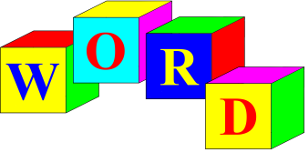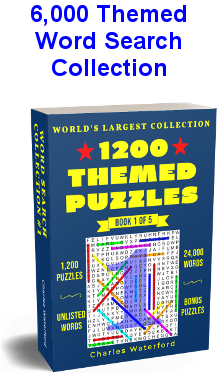Wordnim

| No. of Players: | 2 |
| Type of Game: | written |
| What you need: | pen and paper |
Goal
To use up letters of the alphabet by making words.
How to play
This game is the verbal version of Nim, where players remove objects from piles with the goal of forcing their opponent to take (or leave) the last object. Wordnim can be played in several different ways. Here are a few suggestions. (Pro tip: mix and match the rules to create your own version of the game if you desire.)
The first way to play is to list out all the consonants of the alphabet, like so:
B C D F G H J K L M N P Q R S T V W X Y Z
Players then take turns writing down single words that use up the letters, which are crossed off the list. However, while vowels can be used more than once, only those consonants which have not yet been crossed out are permitted in a new word. The player who successfully uses the last letter(s) is declared the winner. To make the game more challenging, players can set, or limit, the length of words. Or else require that each new word be associated to words already written down. For example, the first player might write AMERICA and cross out C, M, and R. The second might then write NATION or ENGLISH, but not DEMOCRACY or PATRIOTIC.
Another way to play is by listing out the entire alphabet, vowels included:
A B C D E F G H I J K L M N O P Q R S T U V W X Y Z.
The players then take turns writing down words, beginning with a word that starts with A. Subsequent words must use up the remaining letters in their sequential order. For example, if the first word is AMBER, letters A and B are crossed off. The second word must then begin with C, like CAMEL (requiring the third word to start with D) or CANDY (requiring the third word to start with E), and so on. Again, players can set additional rules, like requiring each new word to not only start with the next letter, but to also contain the next sequential letter. For example, the first word can be ABSENT (because it starts with A and also contains the following letter B), but not APPLE. The second word can then be CORD (because it starts with C and also contains D), but not CANOE. And so on. The loser is the player who is forced to write down the last word, usually one that starts with Z.
Alternatively, the first player can begin at any letter of alphabet. Players then work sequentially through the alphabet from that point until they return to the starting point. The player who writes down the last word is the loser, or if they agree beforehand, the winner. The winner could also be the player who crosses out the largest number of letters.
An entirely different way to play wordnim begins with words, rather than an alphabetized list of letters. Players write down, say, two words each. They then take turns crossing out letters in those words to form new words. They must only use those letters which are not crossed out. For example, the players might agree that new words must be associated with at least one of the initial words, and proceed to write down the following four words:
MIDDLE IMAGINE TUNNEL WATER
The first player writes WET (associated with WATER) and crosses out E, T, and W.
The second player writes IDEA (associated with IMAGINE) and crosses out A, E, D, and I.
The first player writes DIM (associated with TUNNEL) and crosses out D, I, and M.
The second player writes RAT (associated again with TUNNEL) and crosses out A, R, and T.
The first player then writes MENU (explaining that WATER is often a selection on menus) and crosses out E, M, N, and U.
The second player sees that the words LINEN, GILL, GLEN, LIEN, LINE, NINE, GEL, GIN, ILL, INN, LEG, LIE, NIL, and IN can all be formed out of the remaining letters E, G, I, L, L, N, and N, but cannot convince the first player that any of these are naturally associated with any of the four initial words. The first player is thus deemed the winner.

